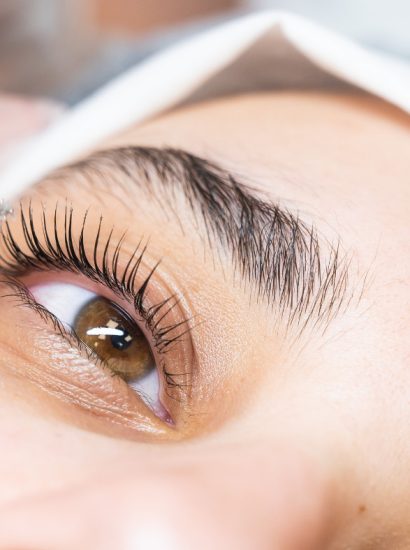Lactic acid may sound like something you’d rather avoid, especially if you associate it with sore muscles after a workout. However, this organic compound is a powerful ally for your skin and body when used appropriately. Found in dairy products and produced naturally in your muscles, lactic acid plays multiple roles in health, fitness, and beauty.
From revitalizing dull skin to supporting muscle recovery, lactic acid is a multitasker worth understanding. In this comprehensive guide, we’ll explore the many benefits of lactic acid for both your skin and body, and how you can incorporate it into your wellness routine.
What Is Lactic Acid?
Lactic acid is an alpha-hydroxy acid (AHA) derived from fermented lactose in milk or synthetically produced. In skincare, it’s known for being a gentle exfoliant that removes dead skin cells, while in physiology, it’s a metabolic byproduct of intense physical activity.
There are two main contexts in which lactic acid plays a role:
- Topically: Used in skincare to improve texture, tone, and hydration.
- Internally: Produced by muscles during anaerobic respiration, contributing to energy production.
Despite its reputation for causing soreness, lactic acid is essential to human health — and when properly balanced, it brings a host of benefits.
Lactic Acid for Skin: Gentle but Powerful Exfoliation
One of the most celebrated uses of lactic acid is in skincare. As an AHA, it works on the surface layer of the skin, gently dissolving the bonds that hold dead skin cells together. This exfoliation process leads to:
- Smoother skin texture
- Brighter, more even tone
- Reduced appearance of fine lines
- Improved product absorption
Unlike stronger acids like glycolic acid, lactic acid is milder, making it a great option for people with sensitive skin or beginners to chemical exfoliants. It helps slough off dead skin without causing irritation or redness.
Regular use of lactic acid can transform dull, rough, or congested skin into a radiant and refined complexion.
Hydration Boost: Strengthening the Skin Barrier
What sets lactic acid apart from many other exfoliants is its dual action: it not only resurfaces the skin but also hydrates it. It’s a natural humectant, meaning it draws moisture into the skin.
Benefits include:
- Increased skin plumpness
- Reduced dryness and flakiness
- Strengthened lipid barrier, which helps prevent transepidermal water loss
This makes it ideal for individuals dealing with dry or dehydrated skin, especially during colder months. Many lactic acid products are formulated with additional moisturizers to further support hydration.
Treating Hyperpigmentation and Uneven Skin Tone
Lactic acid is a favorite among dermatologists for fading dark spots, melasma, and acne scars. Its gentle exfoliating action encourages cell turnover, which brings new, evenly pigmented skin cells to the surface.
Over time, consistent lactic acid use can lead to
- Lightened sunspots
- Minimized post-acne marks
- A more uniform skin tone
Because it doesn’t cause significant irritation, it can be safely used by most people with pigmentation concerns — even those with sensitive or darker skin tones, who may be more prone to inflammation.
Lactic Acid in Muscle Performance and Recovery
On the body side of the equation, lactic acid is an integral part of your energy system, particularly during high-intensity exercise. When oxygen levels are low, your body converts glucose into lactic acid to keep energy production going.
While often misunderstood, lactic acid is not the direct cause of muscle soreness — delayed onset muscle soreness (DOMS) is due to microscopic muscle damage. In fact, lactic acid may help:
- Fuel short bursts of activity
- Act as a temporary energy reserve
- Stimulate mitochondrial growth when cleared effectively
By managing lactic acid through proper training, hydration, and cooldowns, athletes can optimize performance and accelerate recovery.
Lactic Acid in Dietary and Supplement Forms
Although most famous for its topical and metabolic roles, lactic acid is also found in probiotic-rich fermented foods such as:
- Yogurt
- Kefir
- Sauerkraut
- Kimchi
- Pickles (non-vinegar based)
These lactic acid-fermented foods offer numerous gut health benefits. They help maintain a healthy microbiome, which is increasingly linked to:
- Improved immune function
- Better digestion
- Clearer skin
- Balanced mood and mental health
While not a supplement itself, lactic acid is produced by beneficial bacteria like Lactobacillus, making it essential for gut function and systemic health.
How to Use Lactic Acid Safely and Effectively
For Skin
- Start slow: 5% lactic acid products are great for beginners; increase to 10% gradually.
- Use at night: AHAs can make your skin more sensitive to the sun.
- Pair with SPF: Always wear sunscreen during the day to prevent UV damage.
- Avoid overuse: 2–4 times a week is enough for most skin types.
For Muscle Recovery
- Hydrate before and after workouts.
- Incorporate active recovery, such as walking or light stretching, to clear lactic acid buildup.
- Ensure adequate rest and nutrition to support muscle repair.
For dietary benefits, incorporate fermented foods regularly, or consult your healthcare provider about probiotic supplements containing lactic acid-producing bacteria.
Conclusion
Whether you’re trying to enhance your skincare, recover faster from workouts, or support your gut health, lactic acid is a powerhouse ingredient with proven benefits. Its gentle exfoliating properties make it a staple in modern skincare, while its role in muscle function and digestion supports broader health goals.
Lactic acid is one of the few compounds that bridges the gap between beauty and wellness — offering tools for clearer skin, faster recovery, and a healthier body. With proper use, it can become a cornerstone of your self-care and fitness routine.
FAQs
1. Is lactic acid safe for all skin types?
Yes, lactic acid is generally safe for most skin types, especially in lower concentrations (5%). However, sensitive or rosacea-prone skin should start slowly and always patch test first.
2. How often should I use lactic acid on my skin?
2 to 3 times per week is sufficient for most people. Overuse can lead to irritation or sensitivity, so allow your skin time to adjust.
3. Does lactic acid help with acne?
Yes, it can help prevent clogged pores and reduce post-acne marks, but it’s not a direct treatment for active, inflamed acne. Combine it with other ingredients like salicylic acid for best results.
4. Is lactic acid the same as lactate in muscles?
Lactic acid and lactate are closely related. In the body, lactic acid quickly dissociates into lactate and hydrogen ions. Lactate plays an important role in energy metabolism during exercise.
5. Can I use lactic acid with retinol or vitamin C?
It depends. Using them together may cause irritation, especially if you have sensitive skin. It’s best to alternate days or use lactic acid in the evening and vitamin C in the morning.
Also read: Vitamin E for Skin: The Secret to Smooth, Youthful Complexion





